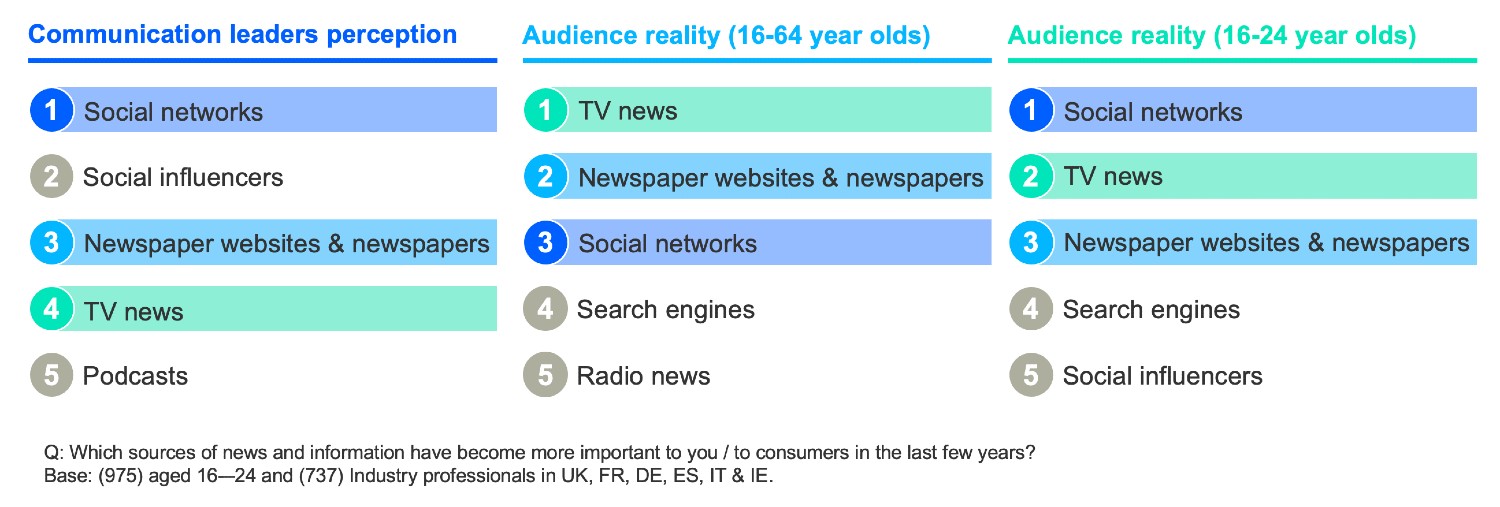For our recent report, ‘5 crucial steps to a smarter communications strategy’, we spoke to over 700 in-house communications practitioners and 6,000 members of the public across Western Europe and gained a unique view into changing audience attitudes and the consumption trends we are facing.
Crucially, we sought out to explore whether, in an understandable desire to embrace the future, communicators are empathising too much with younger audiences.
So, are young audiences are skewing industry assumptions ?
Our study revealed that industry professionals’ assumptions of changing audience behaviour are closer to the actual behaviour of 16-24-year-olds than the market as a whole.
As depicted in the charts below, industry professionals believe that audiences are now following social influencers (52%) and listening to podcasts (43%) more for news, yet just 7% and 5% of audiences say they do actually use those channels more. In reality, the media that have grown most in importance are actually TV news and content from newspapers.

The younger generation does indeed see social media as their fastest growing source of news. However, even when focusing on this younger demographic, the growing influence of social influencers and podcasts is greatly overstated.
Reaction is not a strategy
Whilst we should anticipate the future shape of news consumption, it’s important we don’t ignore the current reality. Reaction is not strategy – you need the mix right in order to target the desired audiences and hone messages in an always-on news and information landscape. It’s critical that comms teams understand audience attitudes and continually stress test their perceptions in order to accurately target their media plans. Data to understand and manage change is a vital component in building strategies that align with audience perceptions.
How well do you know your audience?
Through our Kantar monitoring and intuitive dashboards, we bridge the ‘what’ to the ‘why’. Our services enable organisations to formulate and evolve their reputation strategy, predict future audience trends and benchmark key metrics across categories and sectors.
The full report, available to download here, challenges our collective conventional thinking, identifies new priorities, and underlines the importance of evidence-based insights. It forms part of our 2021 Media Navigator series, a provocative perspective that looks at how data can keep you competitive in an increasingly dynamic, connected world.
Editor’s Notes:
Kantar spoke to over 700 in-house communications practitioners and over 6,000 members of the public across Western Europe (France, Germany, Ireland, Italy, Spain and UK) to understand what matters to the communications industry and the audience it seeks to engage – revealing some uncomfortable truths and challenging conventional thinking. The report, available to download for free, has been designed to offer an analysis of issues such as trust in news brands & aggregators, the reliance on technology and human intelligence to understand media coverage and its impact on reputation – as well as the need to better leverage existing data assets. Together, these individual elements form five crucial steps to a smarter communications strategy.

